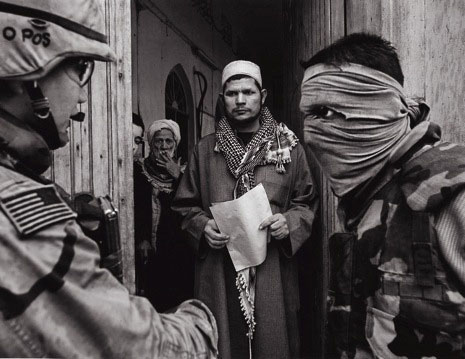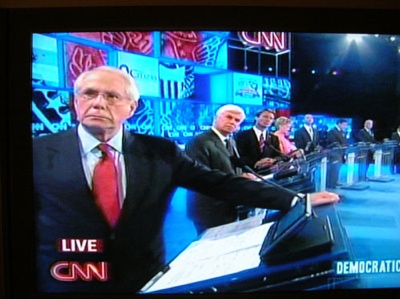Notes
Our Iraqi Employees In A Snapshot

If you never came across George Packer’s article in the New Yorker back in March (Betrayed: The Iraqis who trusted America the most), it’s a must read. The piece chronicles the tortuous fate of various Iraqi nationals who gave, then lost everything for their duty inside the Green Zone. Even more fantastic, however, is how the situation has decayed since the exposé.
The news dripping out of Iraq in the past month demonstrates this meltdown into hell.
Two weeks ago, for example, the NYT reported the murder of an elderly couple working for the U.S. embassy. The husband was killed by kidnappers, and the wife was killed trying to deliver his ransom. That the U.S. could offer no protection offered a pitiful follow-up to the Packer piece.
The last desperate straw (if not shades of the fall of Saigon), however, was the WAPO piece reported yesterday. Titled “Envoy Urges Visas For Iraqis Aiding U.S.: Targets of Violence Are Seeking Refuge,” the story has two equally abysmal elements. First, were learn of the U.S. Ambassador Crocker’s suddenly urgent effort to secure exit visas for Iraqi workers as presumably the only condition left by which the dwindling number of Iraqi helpers will even stick around. Second, we are offered a thoroughly embarrassing overview of Iraqi – U.S. immigration policy and statistics.
More than anything, however, I wanted to concentrate on this stunning photo by James Nachtwey that accompanied the George Packer piece. As an American, I believe a consideration of this piece of narrative is practically obligatory. The caption reads:
An Iraqi interpreter wears a mask to conceal his identity while he assists a soldier delivering an invitation to an Imam for a meeting with an American colonel.
The way the Iraqis, including the interpreter, are lined up in a diagonal row, with the American the only one offset, is a fateful piece of geometry given the failure of the U.S. to line up with or get behind its in-country support. The way the interpreter is so completely “out front” is another angular expression of the fateful situation.
More than anything, though, the brilliance of the image/message derives from the contrast between the translator and soldier. The fact the tension is so unilateral — between the incredible stress in the eyes and body of the interpreter, and the matter-of-fact, and less than attentive response of the soldier — is simply incredible.
The result — in light of how the American government has allowed these Iraqi employees live, and die on the vine — throws the glare on us.
(image: James Nachtwey. Iraq. newyorker.com)


Reactions
Comments Powered by Disqus